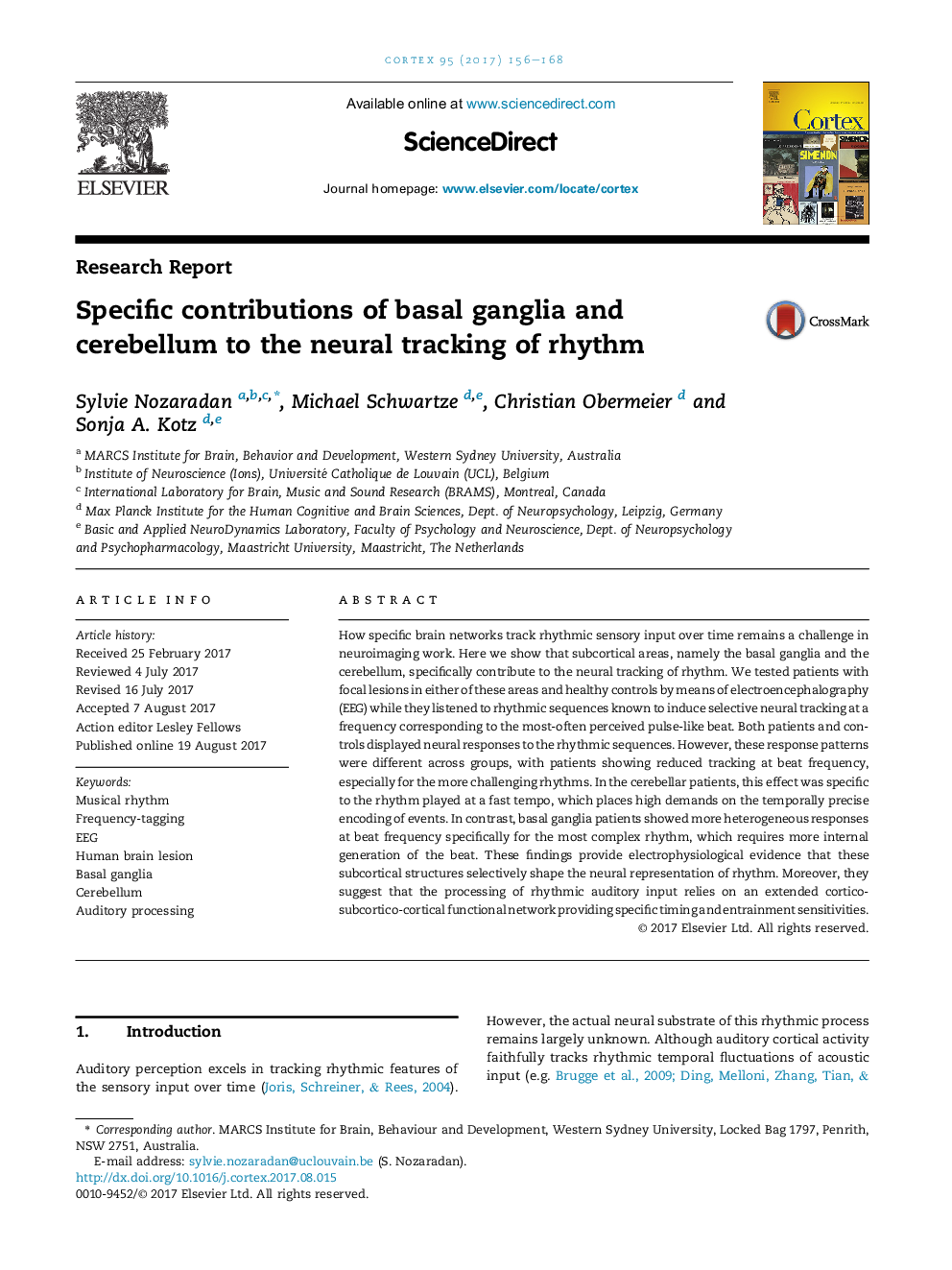| کد مقاله | کد نشریه | سال انتشار | مقاله انگلیسی | نسخه تمام متن |
|---|---|---|---|---|
| 5044526 | 1475437 | 2017 | 13 صفحه PDF | دانلود رایگان |
How specific brain networks track rhythmic sensory input over time remains a challenge in neuroimaging work. Here we show that subcortical areas, namely the basal ganglia and the cerebellum, specifically contribute to the neural tracking of rhythm. We tested patients with focal lesions in either of these areas and healthy controls by means of electroencephalography (EEG) while they listened to rhythmic sequences known to induce selective neural tracking at a frequency corresponding to the most-often perceived pulse-like beat. Both patients and controls displayed neural responses to the rhythmic sequences. However, these response patterns were different across groups, with patients showing reduced tracking at beat frequency, especially for the more challenging rhythms. In the cerebellar patients, this effect was specific to the rhythm played at a fast tempo, which places high demands on the temporally precise encoding of events. In contrast, basal ganglia patients showed more heterogeneous responses at beat frequency specifically for the most complex rhythm, which requires more internal generation of the beat. These findings provide electrophysiological evidence that these subcortical structures selectively shape the neural representation of rhythm. Moreover, they suggest that the processing of rhythmic auditory input relies on an extended cortico-subcortico-cortical functional network providing specific timing and entrainment sensitivities.
Journal: Cortex - Volume 95, October 2017, Pages 156-168
